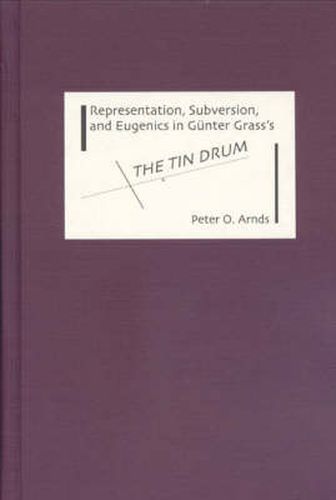Readings Newsletter
Become a Readings Member to make your shopping experience even easier.
Sign in or sign up for free!
You’re not far away from qualifying for FREE standard shipping within Australia
You’ve qualified for FREE standard shipping within Australia
The cart is loading…






In receiving the Nobel Prize for Literature in 1999, Gunter Grass, a prominent and controversial figure in the ongoing discussion of the German past and reunification, finally gained recognition as Germany’s greatest living author and as a writer of international importance and acclaim. If there is one book in post-1945 German literature that is known throughout the world, it is Grass’s novel The Tin Drum (1959), which remains one of the most important works of literature for the construction of postwar German identity. Peter Arnds offers a completely new reading of this novel, analyzing an aspect of Grass’s literary treatment of German history that has never been examined in detail: the Nazi ideology of race and eugenics, which resulted in the persecution of so-called asocials (including the physically and mentally handicapped, criminals, homosexuals, and vagabonds) as life unworthy of life, their extermination in psychiatric institutions in the Third Reich, and their marginalization in the Adenauer period. Arnds shows that in order to represent the Nazi past and subvert bourgeois paradigms of rationalism, Grass revives several facets of popular culture that National Socialism either suppressed or manipulated for its ideology of racism. In structure and content Grass’s novel connects the persecution of degenerate art to the persecution and extermination of these asocials, for whom the persecuted dwarf-protagonist Oskar Matzerath becomes a central metaphor and voice. This comparative study reveals that through intertextuality with the European fairy-tale tradition, the picaresque novels of Rabelais and Grimmelshausen, and through an array of carnivalesque figures-the mythological trickster, the clown, the fool, and the harlequin-Grass creates an irrational counterculture opposed to the rationalism of Nazi science and its obsession with racial hygiene, while simultaneously exposing the continuity of this destructive rationalism in postwar Germany and the absurdity of a Stunde Null, that putative tabu.
$9.00 standard shipping within Australia
FREE standard shipping within Australia for orders over $100.00
Express & International shipping calculated at checkout
In receiving the Nobel Prize for Literature in 1999, Gunter Grass, a prominent and controversial figure in the ongoing discussion of the German past and reunification, finally gained recognition as Germany’s greatest living author and as a writer of international importance and acclaim. If there is one book in post-1945 German literature that is known throughout the world, it is Grass’s novel The Tin Drum (1959), which remains one of the most important works of literature for the construction of postwar German identity. Peter Arnds offers a completely new reading of this novel, analyzing an aspect of Grass’s literary treatment of German history that has never been examined in detail: the Nazi ideology of race and eugenics, which resulted in the persecution of so-called asocials (including the physically and mentally handicapped, criminals, homosexuals, and vagabonds) as life unworthy of life, their extermination in psychiatric institutions in the Third Reich, and their marginalization in the Adenauer period. Arnds shows that in order to represent the Nazi past and subvert bourgeois paradigms of rationalism, Grass revives several facets of popular culture that National Socialism either suppressed or manipulated for its ideology of racism. In structure and content Grass’s novel connects the persecution of degenerate art to the persecution and extermination of these asocials, for whom the persecuted dwarf-protagonist Oskar Matzerath becomes a central metaphor and voice. This comparative study reveals that through intertextuality with the European fairy-tale tradition, the picaresque novels of Rabelais and Grimmelshausen, and through an array of carnivalesque figures-the mythological trickster, the clown, the fool, and the harlequin-Grass creates an irrational counterculture opposed to the rationalism of Nazi science and its obsession with racial hygiene, while simultaneously exposing the continuity of this destructive rationalism in postwar Germany and the absurdity of a Stunde Null, that putative tabu.